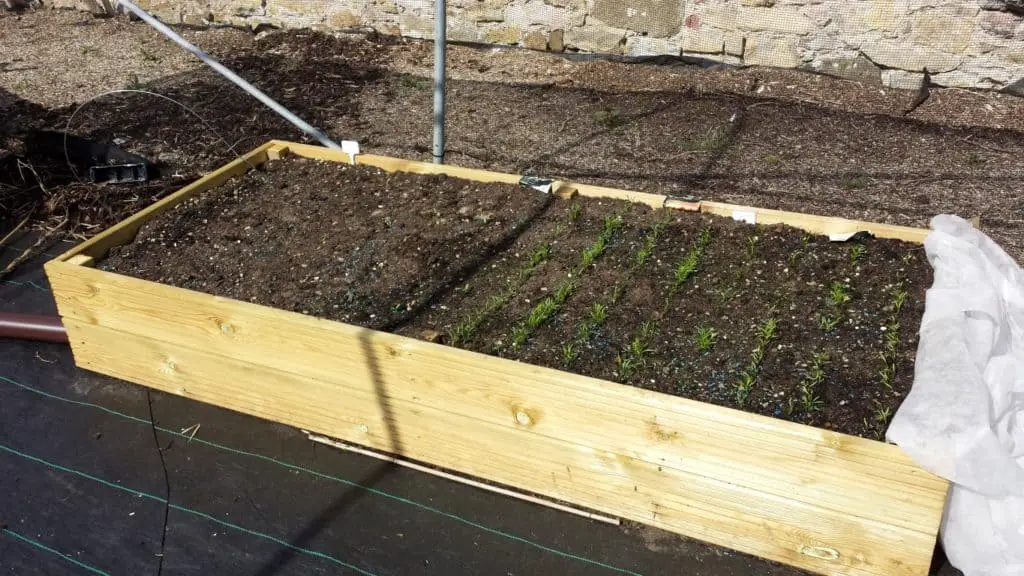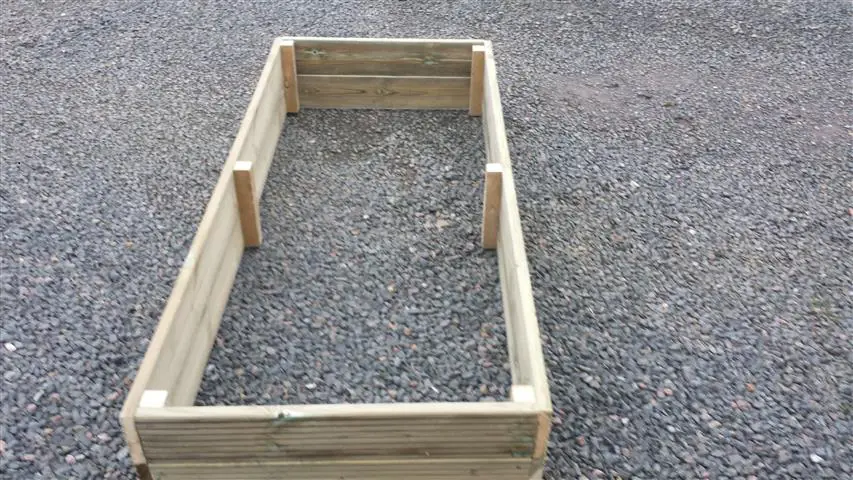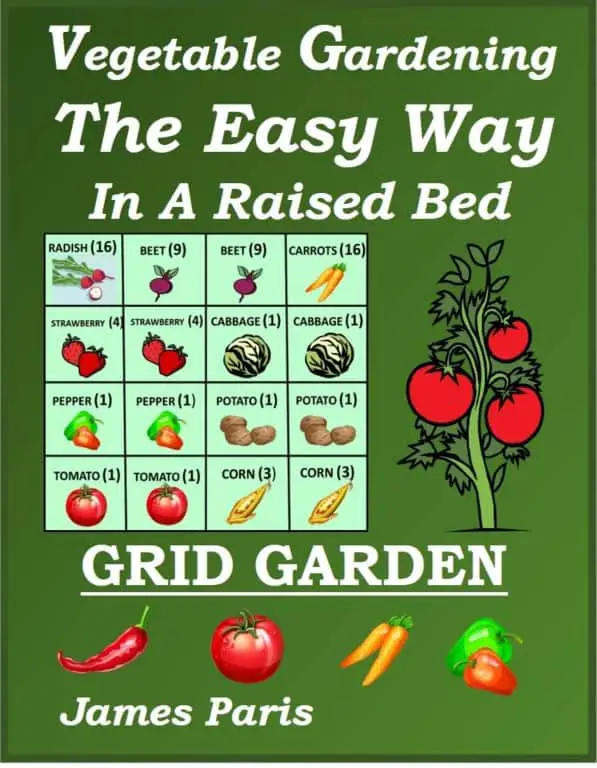If your growing vegetables in Raised Beds then it is good practice to get the soil mix right if you want to capitalise on the whole idea of using Raised Beds – possibly one of the most popular of the no- dig gardening techniques on the planet!
dig gardening techniques on the planet!
The general idea behind no-dig gardening is just that – no heavy digging! However if you get the soil mix wrong, then you are likely to be doing a lot more digging than you first anticipated.
The fact is that ‘normal’ soil in the closed environment of a timber frame tend to compact down, and become a less attractive place for your veggies to grow. This is especially the case if you have a high clay content in the soil.
Compacted soil leads to poor irrigation and compressed, restricted root systems that will stunt the growth of most plants – apart from invasive weeds of course!
This is one of the big advantages with Raised beds – the fact that you do not walk on the growing area itself, leading to compaction of the soil and restricted root growth.

The solution to this possible problem is to be sure that you produce the best soil mix possible for your particular vegetables. Fortunately this is not at all difficult and all that has to be considered is the nutritional and growing demands of your veggies. Make sure they have enough sunshine (at least 8 hours daily) and water.
Generally speaking I use a variety of different types of soil mix in my Raised Bed Gardens. One mix for deep rooted vegetables such as carrots, beetroot, radish, turnip, and parsnips which all need well drained soil that will not inhibit the root growth.
The mixes that included washed sand or concrete sand are best for tap-root vegetables such as carrots as they need good drainage and no obstacles that will cause the roots to go all ‘pear shaped’ 😊
such as carrots as they need good drainage and no obstacles that will cause the roots to go all ‘pear shaped’ 😊
I use another general mix that will do most other vegetables including cabbage, brussels sprouts, lettuce, kohlrabi, onions, shallots, cauliflower, peas & beans.
The soil mixes below will produce a good ‘friable’ soil mix that will not compact easily and will give the plants a good start in life – the rest is up to nature, and you!
Raised Bed & Square Foot Garden Soil Mixes for veg.
- Mix 1: 50% compost, 20% sand, 20% top soil, 10% vermiculite.
- Mix 2: 50% compost, 20% vermiculite (or perlite), 30% peat moss.
- Mix 3: 50% compost, 30% peat moss, 20% quality topsoil.
- Mix 4: 50% compost, 20% quality topsoil, 20% vermiculite,10% sand
The addition of Vermiculite (or pearlite
(or pearlite which is a cheaper option) is a valuable addition particularly if you are using the Square Foot Garden technique. The Vermiculite helps retain water and nutrients, as well as keeping the friability of the soil, thereby improving your crops and keeping the mix truly ‘no-dig’.
which is a cheaper option) is a valuable addition particularly if you are using the Square Foot Garden technique. The Vermiculite helps retain water and nutrients, as well as keeping the friability of the soil, thereby improving your crops and keeping the mix truly ‘no-dig’.
I have been asked why I do not put more topsoil in the Raised Bed mix? I have found through trial and error, that too much topsoil can make the mix heavier than it needs to be. This can result in the material compacting within the framework and working against the whole point of a no-dig garden.
The mix in any ‘box garden’ should be loose enough so that you are able to turn it over and weed with a small hand fork – even well into the season.
When constructing a Raised Bed. The frames should be built no wider than 3 feet, so that you are able to reach the middle of the bed from either side of the framework. This means that you should never have to stand onto the growing area itself thereby packing it down and compressing it – to the detriment of your plants.

This is the whole basis of a no-dig garden method such as traditional Raised Beds or indeed the Square Foot Gardening technique that is another version of the Raised Bed Garden.
How To Fill A High Raised Garden Bed
There is no doubt about it, the infill for a high Raised bed can be fairly expensive. However there are a few ways to cut the cost of filling high garden beds (generally anything over 18” is considered high.
As long as you retain around 14 inches or so actual soil mix you will not go far wrong – less than this if you are not planting tap root veggies like carrots or parsnips.
- Home made compost. Even if it is not fully composted down, just add to the bottom of the bed in order to bulk it up.
- Add stones or any old rubble in the base of the bed to take up space
- If the bed is over 2 foot deep then I have placed straw bales on their sides to take up a lot of space. They do the business for the first couple of years, then rot down over the next few years and become valuable compost!
- Try placing a load of old fallen timbers or branches in the bottom, similar to a Hugelkultur. This will feed the plants for years as the sticks compost over time.
- Squashed cardboard boxes or brown paper is a good idea to bulk up the bed. But not glossy paper or colored.
Basically all you are trying to do is create a growing area deep enough for the veggies you plan on growing – it really does not have to be 2 foot deep expensive compost!


